Surviving Sexual Violence
Surviving Sexual Violence
A Guide to Recovery and Empowerment
Edited by Thema Bryant-Davis
ROWMAN & LITTLEFIELD PUBLISHERS, INC.
Lanham Boulder New York Toronto Plymouth, UK
Published by Rowman & Littlefield Publishers, Inc.
A wholly owned subsidiary of The Rowman & Littlefield Publishing Group, Inc.
4501 Forbes Boulevard, Suite 200, Lanham, Maryland 20706
http://www.rowmanlittlefield.com
Estover Road, Plymouth PL6 7PY, United Kingdom
Copyright 2011 by Rowman & Littlefield Publishers, Inc.
All rights reserved. No part of this book may be reproduced in any form or by any electronic or mechanical means, including information storage and retrieval systems, without written permission from the publisher, except by a reviewer who may quote passages in a review.
British Library Cataloguing in Publication Information Available
Library of Congress Cataloging-in-Publication Data
Surviving sexual violence : a guide to recovery and empowerment / edited by Thema Bryant-Davis.
p. cm.
Includes bibliographical references and index.
ISBN 978-1-4422-0639-7 (cloth : alk. paper) ISBN 978-1-4422-0641-0 (electronic)
1. Sexual abuse victimsRehabilitation. 2. Sexual abuse victimsPsychology. I. Bryant-Davis, Thema.
RC560.S44S87 2011
362.88dc22
2011013937
 The paper used in this publication meets the minimum requirements of American National Standard for Information SciencesPermanence of Paper for Printed Library Materials, ANSI/NISO Z39.48-1992.
The paper used in this publication meets the minimum requirements of American National Standard for Information SciencesPermanence of Paper for Printed Library Materials, ANSI/NISO Z39.48-1992.
Printed in the United States of America
Dedication
To my mother, Rev. Cecelia Williams Bryant, my first feminist role model, whose life is a testament that healing, recovery, growth, and empowerment are possible. Thank you for your fire.
Acknowledgments
Thank you to Shaquita Tillman and Monica Unique Ellis for your detailed administrative assistance in the compilation of this important text. Your dedication and spirit of excellence are appreciated as always. I am excited about the great paths that are ahead for each of you.
Introduction
Thema Bryant-Davis
Sexual violence is a violation of survivors and society as a whole. It disrupts mental and physical well-being and devastates the fabric of social relationships. While many have written about the high global prevalence of sexual violence and its injurious consequences, less has been published about the multiple ways people can and do heal. Editing this book was important to me personally and professionally. I am a survivor of sexual violence, and I can honestly say the possibilities for my life did not end in the multiple moments of violation I have lived through. Additionally, I work as a licensed clinical psychologist and trauma researcher in the area of sexual violence. My work is based on the understanding that women and men, girls and boys around the globe have been sexually violated and yet many have found ways to move toward recovery and empowerment. This book is an acknowledgment of those who have started the healing journey as well as a resource for those who would like to get started on the path of reclaiming themselves and their lives.
The premise of this book is that survivors of sexual violence may develop pathology, but they also have incredible possibility to grow and live full lives. The book title speaks of survival because it is important to not centralize the mentality of victim but to know that survival is possible. It is also critical to not end at survival but to seek thriving. In other words, the healing pathways in this book aim to help people to not only reduce or eliminate post-trauma symptoms, but to also help survivors develop positive self-esteem, life purpose, relationships, and self-efficacy. In this way, the recovery process does not end at the point of cessation of symptoms of distress but moves through that place to the point of empowerment and life fulfillment.
There are diverse aspects of sexual violence. As a result, the beginning of this book provides an overview of the primary forms of violation one may have encountered. In reading through the prevalence and dynamics of these experiences, one will see similarities and differences. One important commonality is the abuse of power and the objectification of victims. While these forms of violence are sexual in nature, it is important to recall the clear issues of power and control that are the basis of these violations. Survivors of sexual harassment, trafficking, assault, and abuse all experience a level of dehumanization with the needs and desires of the perpetrator being prioritized over their rights to safety. There is no hierarchy of violation. In other words, it is critical that we avoid minimizing our experiences by comparing them to others. Whether you were sexually harassed, trafficked, assaulted, or abused, your trust was broken and your rights were violated. Recognizing that what happened to you should not happen to anyone is an important step in the recovery process.
Once the dynamics of these various types of sexual violation are described, the remainder of the book provides in-depth descriptions of various pathways to recovery and empowerment. These pathways include traditional psychotherapy (such as cognitive-behavioral, psychodynamic, and eye movement desensitization reprocessing) as well as nontraditional approaches (such as mind-body practice, spirituality, and expressive writing). This is the first book to include an in-depth description of these various pathways with a focus on sexual violence recovery. These chapters are authored by esteemed health professionals and scholars. I am pleased with the steps the authors have taken to make this resource accessible and applicable. Specifically, these chapters include both case studies of persons or groups of persons who have made use of these pathways as well as specific suggestions for those who would like to explore each pathway. A final but incredible asset of this text is that, as opposed to ignoring culture or segregating it into one chapter, the contributing authors explore the use of the various healing pathways within various cultural contexts, including but not limited to gender, ethnicity, socioeconomic status, and sexual orientation.
This resource guide is beneficial for counselors and survivors, as well as the support team of survivors. Regarding counselors, we can often get stuck in one orientation and approach to counseling. It is important to recognize the various ways that people heal, recover, and grow. This will allow us to adopt a strengths-based orientation that acknowledges and honors the diverse ways that people have survived. It will also allow for a more integrative approach that considers the possibility of referral and collaboration as well as the pursuit of continued education in various therapeutic methodologies.
For survivors, I would first like to thank you for picking up this text. I hope this guide serves as an important resource for your next steps toward healing and recovery. While you may be interested in reading a specific chapter, I would encourage you to read about all of the pathways. You may discover an interest in a new pathway that could be quite empowering. The reason the pathway chapters have suggestions within them is that it is important that you not only read about recovery but also take follow-up steps toward your empowerment. During the period of violation you were not in control, but you do have the ability to regain control over your life and shape the next stage of your journey. Sexual violence, in any form, is a devastating experience, but it does not have the final say in what your life will be nor what you will become.
For family members, romantic partners, and friends of survivors, I am glad that you are reading this book. Your support, belief, and presence make a huge difference in the lives of survivors. This guide can help you understand, in part, the experience of survivors as well as the various options that are available to them in the recovery process. It is also essential for you to listen to the survivors experience, feelings, and thoughts, as the specifics of the trauma they endured will vary and be shaped by their personal history and the context they were in at the time of the violation. My hope is that this book will give you greater insight into both the struggles facing survivors and the possibilities for healing and growth.


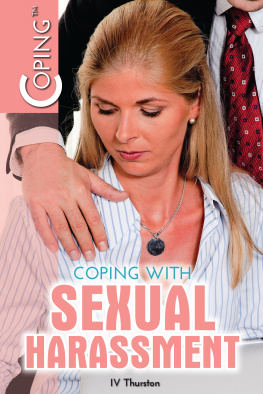
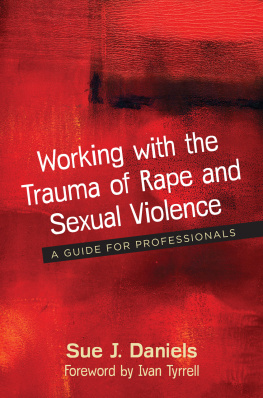
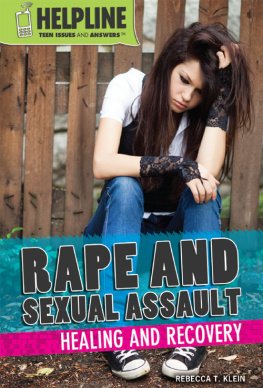

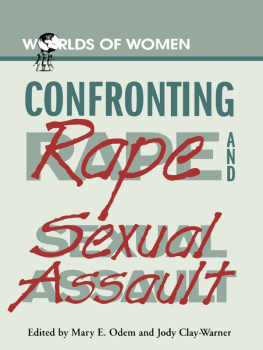

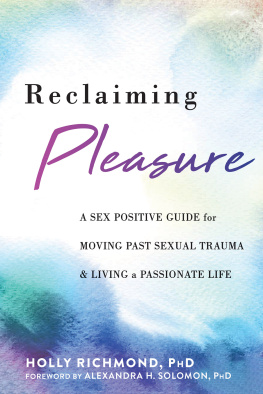
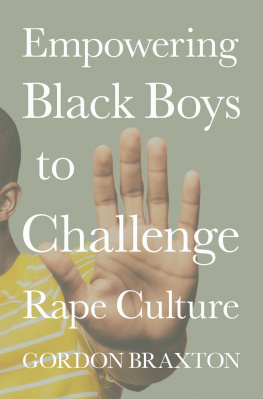
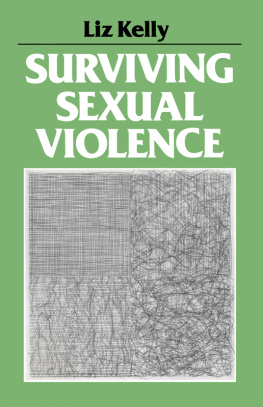
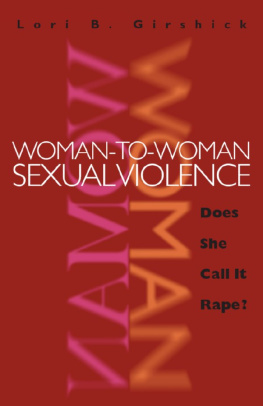
 The paper used in this publication meets the minimum requirements of American National Standard for Information SciencesPermanence of Paper for Printed Library Materials, ANSI/NISO Z39.48-1992.
The paper used in this publication meets the minimum requirements of American National Standard for Information SciencesPermanence of Paper for Printed Library Materials, ANSI/NISO Z39.48-1992.